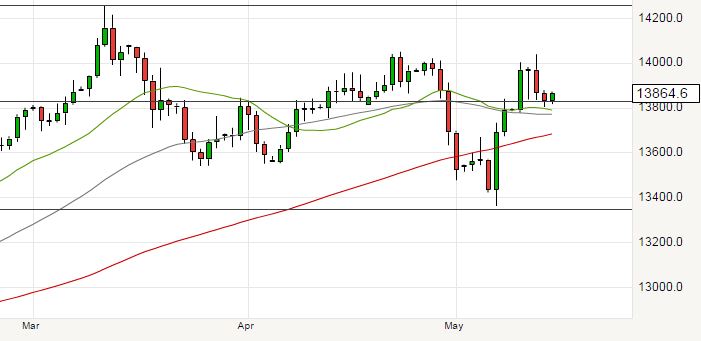GBP/EUR Exchange Rate - Should You Wait for Higher Levels?
- Written by: Gary Howes
The GBP/EUR conversion appears to be stuck in a sideways trending rut, and while declines are forecast to be limited, we would also point out that a recovery to the best levels of 2015 remains some way off.
Those watching the pound to euro exchange rate conversion with short-term currency transfer needs should monitor the test of the key support level at 1.3782 which is the low that was reached on the 11th of May.
A break lower through this zone could well encourage further selling interest which will leave the pound sterling exposed to further declines against its continental cousin.
Resistance to any advances is located in the 1.3877 - 1.39 region, we could see any short-term rebound run out of steam at this point unless there is more significant buying interest to take us back to 1.40.
We should however remind ourselves that in the long-term, prices are in an underlying rising trend and those that can afford to wait could benefit by doing so.
However, the potential successful test of the key resistance at 1.4106, the 3rd of December 2007 high, and the general overbought conditions that took us to the present levels after an impressive run higher continue to advocate for further limited medium-term upside potential.
So, it could be a while yet before the best levels of 2015 are achieved once more.
A key zone of support for the pound euro exchange rate lies at 1.3171 which was the 3rd of February low where enough bargain hunters stepped into the market to boost the GBP.
* All currency quotes mentioned here refer to the wholesale market. Your bank will affix a discretionary spread when transferring money internationally. However, an independent provider will seek to undercut your bank's offer, thereby delivering up to 5% more currency in some instances. Please learn more on how this is achieved here.
Euro Exchange Rate Continues to Advance. Why?
Why is the euro having such a good time of late? It all lies with the bond markets. These are the markets for government debt, one of the largest and most important financial markets on the global stage.
The general equation to take note of is that when bond prices fall, bond yields rise. Rising bond yields tend to boost the currency they are denominated in. We have seen a massive sell-off in German and other Eurozone bonds, which have in turn boosted the euro.
There is no explicit driver of the decline which makes the market particularly hard to call at the present time.
“It's been a topsy turvy session for the euro today despite the fact that much of the continent is closed for a bank holiday. The euro short squeeze continued in early European dealing as the shock of the weak US Retail Sales number reverberated through the markets,” says Boris Schlossberg at BK Asset Management.
The analyst tells us that the disappointing print on US Retails Sales data, released on the 13th of May, put a huge dent into the dollar bullish thesis premise.
“Up to now investors were certain that the combination of the drop in oil prices and steady job growth would translate into a healthy pick up in consumer spending. With consumer making up to 75% of the US economy the pick up in demand is crucial to the overall growth,” says Schlossberg.
Until we see the US economy pick up pace the dollar will likely suffer further pressure, and in the vacuum, allow the euro exchange rate complex the chance to slip in and push higher.






